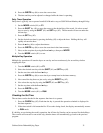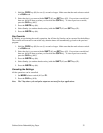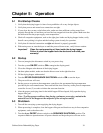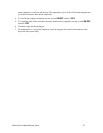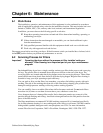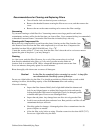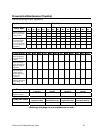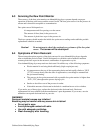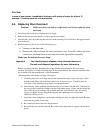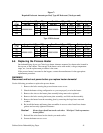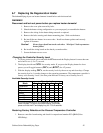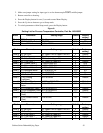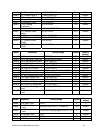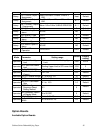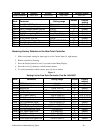Cabinet Series Dehumidifying Dryer 39
6-3 Servicing the Dew Point Monitor
The accuracy of the dew point monitor on dehumidifying dryer systems depends on proper
operation of the dew point sensor and the control board. The dew point sensor is in the process air
stream and is therefore susceptible to contamination.
Dew point sensor life depends on:
Air temperature and flow passing over the sensor.
The amount of fines (dust) in the process air.
The amount of plasticizer vapor in the process air.
The dryer operator should monitor the initial dew point sensor readings and establish a periodic
replacement schedule as needed.
Caution!
Do not attempt to check the continuity or resistance of the dew point
sensor. The sensor will be destroyed!
6-4 Symptoms of Worn Desiccant
The moisture absorption capacity of the desiccant used in your dehumidifying dryer degrades
after an indefinite period of time. Useful life depends on variables such as material moisture
content, plasticizer vapors in the return air, and number of regeneration cycles.
Your dehumidifying dryer may need new desiccant if it exhibits any of the following symptoms:
• Plastic material is not being dried sufficiently (high scrap/reject rate).
• Air temperature at the top of the regenerating desiccant bed rapidly climbs to 350°F
(177ºC) or more shortly after the start of regeneration, even though a saturated bed
has just started heating.
• The process air dew point measured with a portable dew point monitor is higher than
-10°F (-23ºC) throughout the process drying cycle.
• Smoke or dust blows out of the process air outlet.
• Noticeable amounts of desiccant in the beds is a medium-brown color or darker.
If you notice any of these signs, replace the desiccant in the desiccant beds. Desiccant
replacement kits are available from the manufacturer’s parts department. If you want, a service
technician can repack desiccant beds at your site.
WARNING!
Desiccant material causes eye irritation!
Breathing may be harmful and may cause skin irritation!
• Do not get in eyes.
• Avoid prolonged contact with skin.
• Use with adequate ventilation.
• Wash thoroughly after handling.



